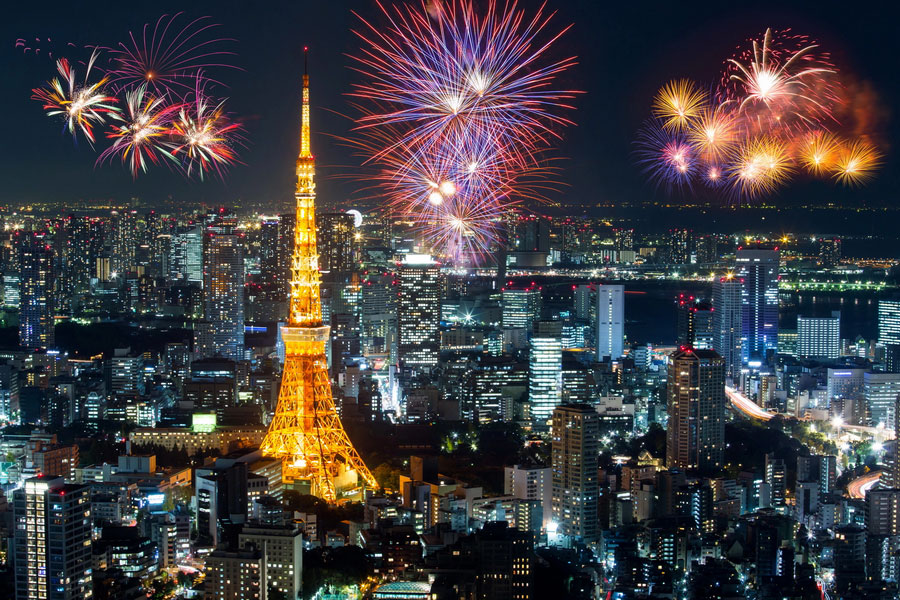Hanabi Matsuri

Hanabi (花火) is more than just fireworks—it’s a cherished Japanese cultural tradition that captures both beauty and meaning. This tradition dates back to the late 16th and early 17th centuries when Portuguese and Dutch merchants introduced fireworks technology to Japan. Initially, fireworks were used for military purposes, but they also gained popularity for entertainment and ceremonial uses during the Edo period (1603–1867).
The first ceremonial use of fireworks took place in 1733 along the Sumidagawa (隅田川) River in Tokyo (東京). Tokugawa Yoshimune (徳川吉宗), the eighth shogun of the Edo Period, decreed that a water-god festival (suijinsai 水神祭) be held annually to mourn those who had died from famine and other disasters. Fireworks were launched at the event, marking the beginning of what would later become the Sumidagawa Fireworks Festival.
Over time, hanabi (meaning "flower fire") displays became more intricate and meaningful, with the patterns in the sky carrying symbolic significance. What do these “flowers of fire” represent to the Japanese? They symbolize the fleeting nature of life and the beauty of the present moment, reminding us of life’s transience. Additionally, hanabi reflects a desire for harmony with nature, which is why floral patterns are most common. Fireworks also hold a deep reverence for the deceased, especially during memorial festivals. Beyond their spectacle, hanabi is considered a form of art, where the approach of the fireworks master is as important as the display itself—much like an artist creating a painting that stirs positive emotions within the audience.
One of the most famous and oldest fireworks festivals in Japan is the Sumidagawa Fireworks Festival (隅田川花火大会) in Tokyo. Held annually on the last Saturday in July, it attracts nearly a million residents dressed in traditional summer kimonos (yukata 浴衣) and curious tourists. More than 20,000 pyrotechnic pieces are meticulously prepared for this dazzling light show in what is considered the birthplace of Japanese fireworks festivals. The display typically lasts around 1.5 hours, with the night sky ablaze with luminous “flowers”, making it feel as bright as day.
To fully enjoy this spectacular event, it’s important to secure a good viewing spot well in advance—ideally a few hours before the show begins, as competition for the best spots can be fierce. Still, the festive and joyful atmosphere is infectious, and the crowd's excitement only grows with each burst of color lighting up the sky.

